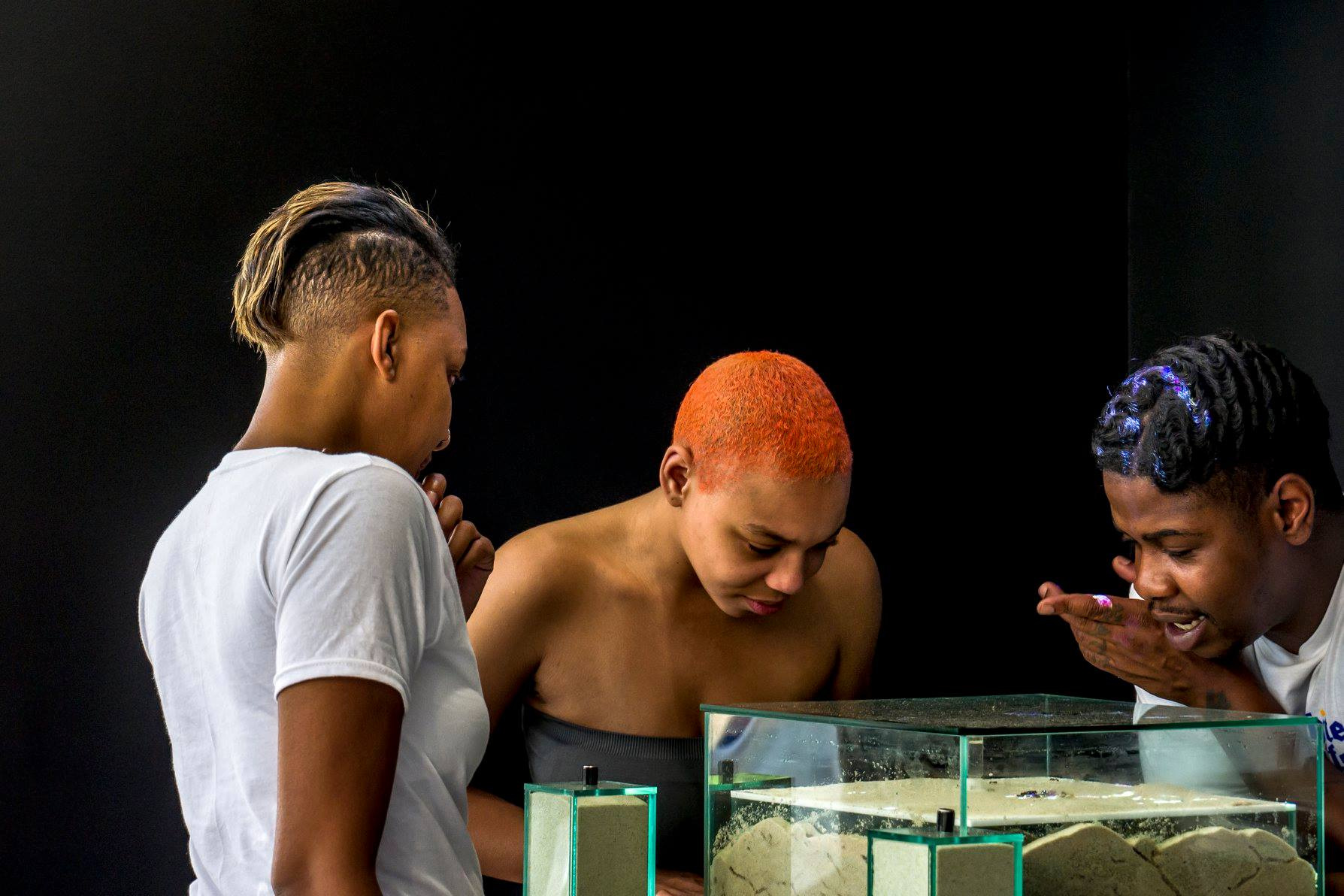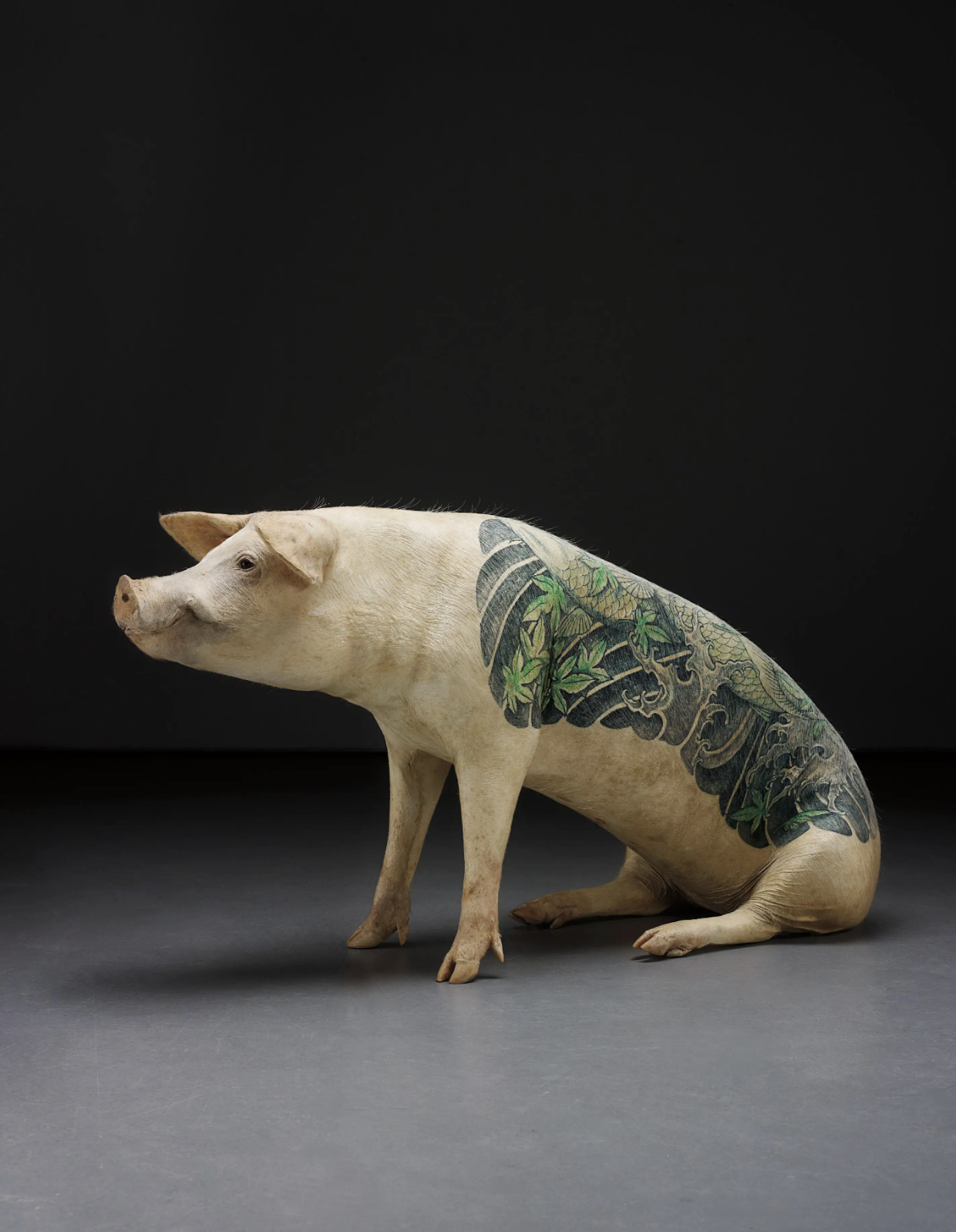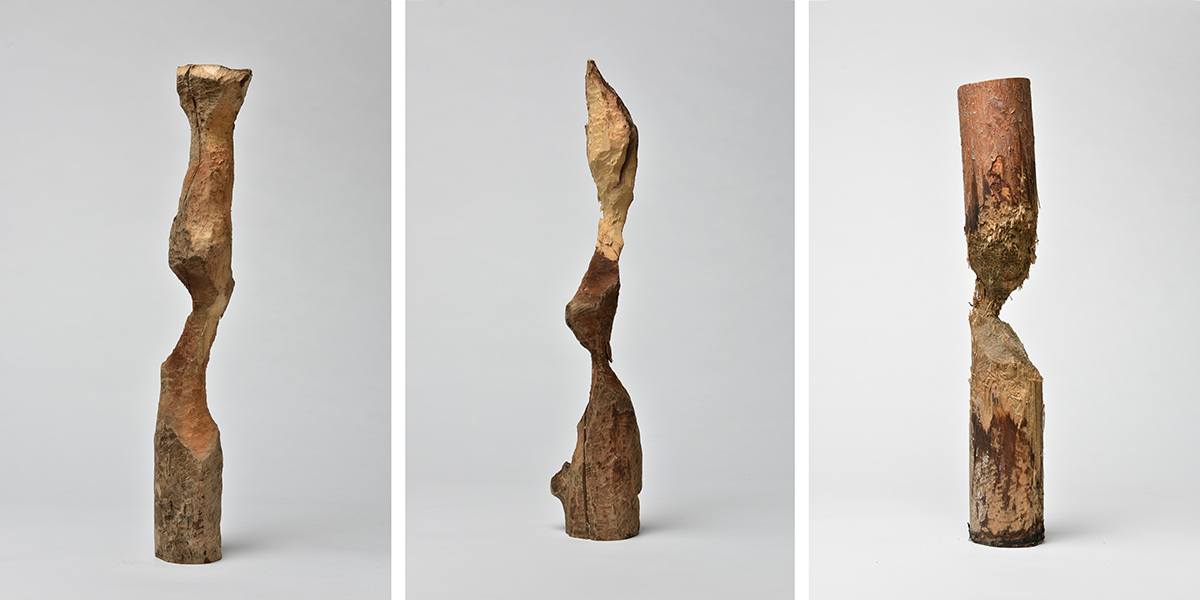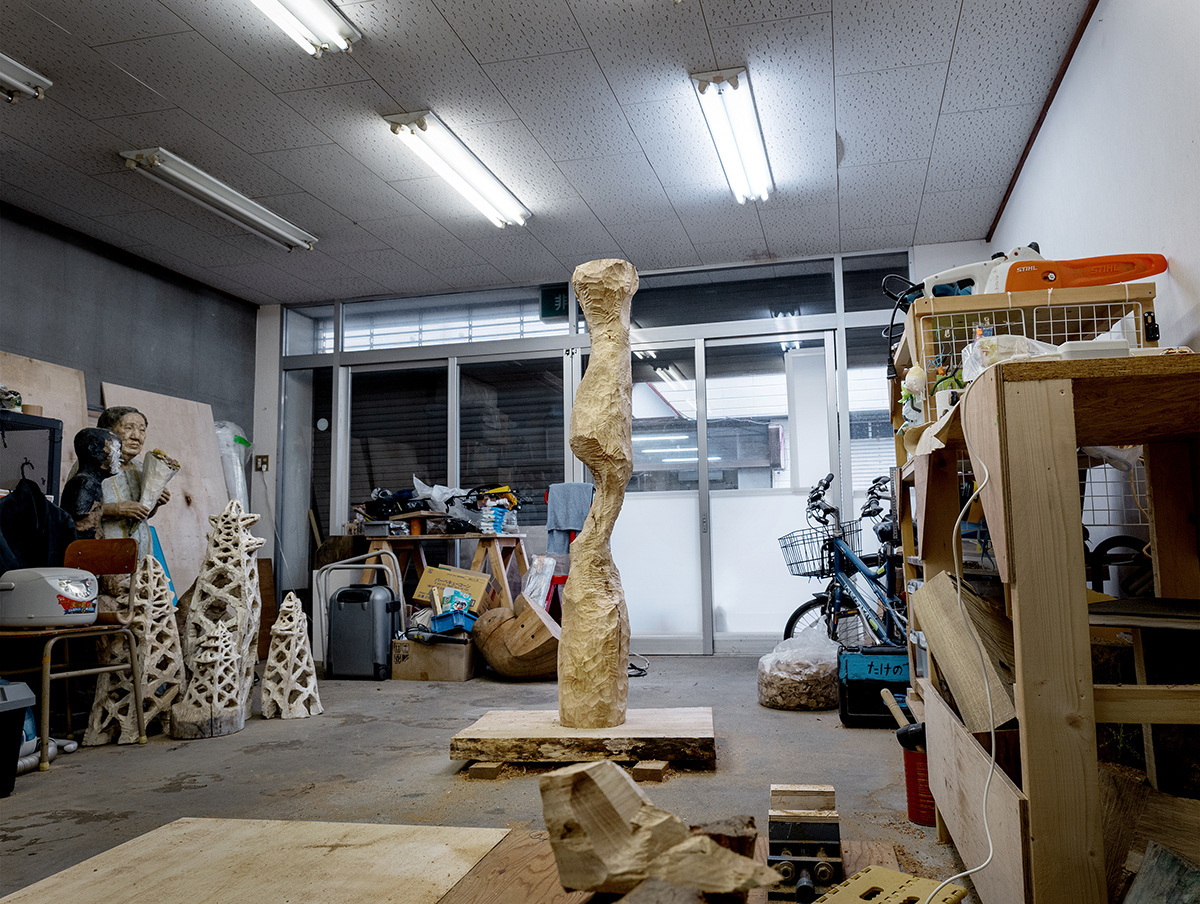Issue 10: Ecoscope
Ecoistic Futures Through Art
 Image by Leslie Ruckman
Image by Leslie Ruckman
Visualization of Humpback Whale Whup recording from Dr. Fournet’s sound libraryPlay audio
This is how to introduce yourself to a humpback whale, the equivalent of “hello, my name is” in their language. If you’re lucky enough to find yourself floating among these gentle giants, you might play a version of this recording, a unique whale greeting created by AI. It’s quite likely the whales will answer back, introducing you into their social group. This is the work of Dr. Michelle Fournet who has spent over a decade recording and decoding humpback whale songs. Her lab at the Cornell Center for Conservation Bioacoustics has trained a machine learning algorithm on hours of humpback whale recordings. Using AI, they’re able to simulate the songs of humpback whales, a complex language that rivals our own. This project, and others like it, are part of a long history of human attempts to communicate with the creatures sharing our planet. As we invent new methods to converse with the natural world, are we ready to listen?
All around us the sights, sounds, and lives of animals are disappearing. In the last 50 years, human activity has extinguished 60% of earth’s wildlife. From tiny insects to enormous elephants, over a million animal and plant species are threatened with extinction, part of the 6th Great Extinction event unfolding on our planet. This loss is devastating for both nature and humanity. Biodiversity is not only core to the health of our planet, it is essential to our own survival. Our challenge exists at the scale of human culture. Can we find ways to live harmoniously with (rather than from) our environment?
Art is particularly well poised to reflect and shape culture, to transmit new cultural ideas and identities. In the majority of popular art, animals and nature take the form of subjects or symbols in painting, sculpture, and poetry. It’s common to find art that uses animals as a material– think of Damien Hirst’s butterfly assemblages, his series of animals preserved in formaldehyde, or Wim Delvoye’s tattooed pig “Art Farm”. These treatments in popular culture lend themselves to an image of these creatures as beautiful commodities, generic masses, or passive subjects to bend to our will. Too often, this supports the extractivist mindset that has come to define our relationship to nature.
 Damien Hirst’s “Kaleidoscope Paintings” Photo courtesy of Mike Clarke/AFP/Getty Images.
Damien Hirst’s “Kaleidoscope Paintings” Photo courtesy of Mike Clarke/AFP/Getty Images.
 Wim Delvoye – Untitled (Koi), 2008 stuffed and tattooed pig, 68 x 132 x 46 cm. Photo courtesy of Public Delivery
Wim Delvoye – Untitled (Koi), 2008 stuffed and tattooed pig, 68 x 132 x 46 cm. Photo courtesy of Public Delivery
This is where interspecies co-creation offers a unique approach, equally defined by human and other-than-human artists. Co-created art recognizes the authorship and agency of individual animals. It seeks to involve them as active participants in the creative process. In order to approach collaboration with those who cannot speak, human artists must try to see the world from the creature’s perspective. This endeavor often involves scientific partners and technology tools that enhance human senses and understanding. The result is creative expression that sits in between the human and the animal, opening the door to new perspectives on how we all might coexist. It’s a shift away from anthropocentric thinking (egotistic) towards an inter-species worldview (ecoistic) that recognizes the interdependence and connectedness of all living beings in the natural world.
Take beavers, for example. Beavers, like humans, change landscapes to fit their needs. They are ecosystem engineers who build elaborate dams to control the flow of water within their territories. In doing so, they create ponds that are critical habitat for birds, fish, and other creatures. This behavior also gets them labeled as pests in human settlements, where not long ago, they were hunted to near-extinction for their fur. What if we recognized the creative ingenuity of beavers the same way we recognize architects? Would we be more welcoming of their presence if we viewed their work as art?
 Taiyo the beaver, b.2014. Production Assistance: Nasu Animal Kingdom, © Aki Inomata
Taiyo the beaver, b.2014. Production Assistance: Nasu Animal Kingdom, © Aki Inomata
This was the perspective of artist Aki Inomata who looked at the remains of chewed wood left by beavers trimming their teeth, and found a kind of Brâncuşi aesthetic. In her piece How to Carve a Sculpture, she focuses on the aesthetic qualities beavers bring to their woodwork — the unique shape of their teeth, the angles at which they chew, the interplay between the growth patterns and grain within the wood and the choices beavers make about where and how to chew it. These nuances become more pronounced as Inomata seeks to recreate the beavers’ work–– first through the hand of a trained human sculptor, and then through the precision work of a CNC machine. Each iteration is an imperfect copy that has obviously been interpreted by human hands and tools. The authorship of the originals are clear: the beavers have their own signature aesthetic. “Can I call this a sculpture?” Inomata asks.
 Beaver sculptures (left to right) by Yuzu(b.2011), and by Komeko(b.2006), © Aki Inomata Production Assistance: Hamura Zoo, Iida City Zoo
Beaver sculptures (left to right) by Yuzu(b.2011), and by Komeko(b.2006), © Aki Inomata Production Assistance: Hamura Zoo, Iida City Zoo
 Beaver sculptures recreated by human sculptor Yumi Takeno, shown at their studio
Beaver sculptures recreated by human sculptor Yumi Takeno, shown at their studio

Beaver sculptures recreated by a CNC machine
Inomata works collaboratively with other species ranging from bagworms to octopus, hermit crabs, beavers and dogs. Her art practice focuses on the creativity of animals, highlighting that the act of “making” is not exclusive to human beings. Her work challenges notions of human exceptionalism as Inomata entangles her own artistic process with that of another. Through co-creating her art with animals, she invites us to reconsider how we’ve understood these creatures in the past and how we might value them in the future.
Shifting perspectives about our fellow creatures is challenging, even when they are cute and cuddly. It becomes even harder when our society considers them pests to be exterminated. In SurveillAnts, my (human) collaborator Gal Nissim and I wanted to challenge our audience’s view of ants, asking them to find relatable parallels between ant societies and our own. Ants go to war, enslave others, and farm food to eat. They build and repair intricate nests, distribute food amongst their colony, and have designated nurseries, cemeteries, and trash heaps. They do all of this without any sort of centralized hierarchy.
 SurveillAnts installation for Hustle a show at Science Gallery Lab, Detroit 2018
SurveillAnts installation for Hustle a show at Science Gallery Lab, Detroit 2018

 SurveillAnts solo show at ChaShaMa arts space in the West Village, NYC 2019
SurveillAnts solo show at ChaShaMa arts space in the West Village, NYC 2019
SurveillAnts is a bioart installation that uses computer vision to track the behaviors of individual Red Harvester Ants. Their movements are visualized as colorful lines projection-mapped in real time back onto their environment. This path data is recorded and can be explored by visitors, redrawn to reveal overlapping patterns. The result is a kind of drawing created by the ant colony, a visual exploration of emergent intelligence.
SurveillAnts solo show at ChaShaMa arts space in the West Village, NYC 2019
Although SurveillAnts borrows methods and materials from scientific research, its goal is to facilitate personal discoveries in the minds of visitors. For some, it evoked childhood memories of playing in the dirt where small creatures were noticed with curiosity. For others, the colorful patterned paths were reminiscent of neurons and galaxies, other self-organizing systems that have a shared pattern language. For Gal and I, we tunneled deep into the world as ants’ smell it, our admiration growing the longer we spent with them. Fascinated by their use of scent pheromones to operate such complex societies, we were led to wonder what biological algorithms compel our human behaviors? For the general audience, SurveillAnts was a way to safely approach creatures perceived as scary or gross. The bright colors and contained environments allowed folks to suspend negative feelings and get close to the ants whose displays brought them to eye level. From this vantage point it became easier to appreciate their aliveness, their individuality, and their sophistication.
Without insects, global ecosystems would collapse. They are essential to the reproduction of plants, the breakdown of organic material, and the food chain of countless species of fish, birds, and animals. They are also disappearing at alarming rates. Mourning this loss, the artist Alexandra Daisy Ginsberg created an artwork for the insects themselves. Pollinator Pathmaker, is an AI that generates “unlimited Edition Gardens”, each designed to maximize the number of different pollinating species supported by the garden.
 Algorithmically generated pollinator garden changing over the seasons, © Pollinator Pathmaker by Alexandra Daisy Ginsburg
Algorithmically generated pollinator garden changing over the seasons, © Pollinator Pathmaker by Alexandra Daisy Ginsburg
 Alexandra Daisy Ginsburg at Eden Project where the first algorithmically derived, non-human centric garden is being installed, photography by Steve Tanner
Alexandra Daisy Ginsburg at Eden Project where the first algorithmically derived, non-human centric garden is being installed, photography by Steve Tanner
Ginsburg’s goal is to transform how we see and create gardens, using technology to drive non-human centric environmental change. Working collaboratively with a team of scientists, she created an algorithm that takes the perspective of pollinating insects, choosing and arranging specific plants into a garden design to satisfy their taste. These gardens must be planted and actively tended to by humans on behalf of the insects––a complete reversal of roles. Ginsburg’s ultimate goal is to create the largest climate-positive artwork by seeding a network of pollinator gardens around the world. To participate, visit Pollinator Pathmaker and design your own garden, view it from the insect’s perspective, and learn more about the supportive plant species.
Historically, the human ability to create art, tools, and technology was cited as proof that we are greater than animals and deserve dominion over nature. We used these means to separate ourselves. Now, using the very same tools, we can disarm this damaging attitude. Technology allows us to experience the world far outside our inborn capabilities. Art can give us empathy and agency to care.
This is the joy and hope that I find in interspecies co-creation. It is work born from an endless curiosity about how we live with and amongst the more-than-human world. For the artists and scientists undertaking this work, it is an intimate process of discovery and connection. The attempt to converse, collaborate, or otherwise share in lives so unlike our own shows us that what it means to be human is to be capable of great care and understanding.
